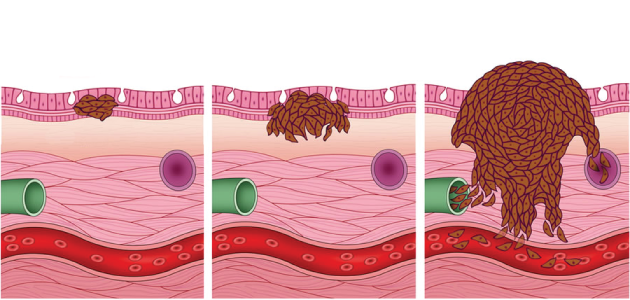This is sobering: melanoma is the fastest growing cancer in the world.
In the last 20 years, the incidence of melanoma has more than tripled among those with fair skin. Melanoma and non-melanoma skin cancers are also on the rise among those with darker skin tones, especially outdoor sport enthusiasts and those who work outdoors and do not use sunscreen. More importantly, melanoma in darker skin is often discovered late, upping the mortality rate.
Unlike most cancers that affect the elderly, melanoma affects many young people. In the 25-29 age group it is the most common form of cancer.
In the 15-29 age group it is the second most common cancer.Daily prevention and protection can help. Schedule an annual skin cancer screening with your doctor and observe changes in moles and pigmentations. A new tool that is proving valuable at early detection is mole mapping.Resources:1) Robers, HW, Weinstock, MA, Harris, AR, et al. Incidence estimate of nonmelanoma skin cancer in the United States, 2006. Arch Dermatol 2010; 146(3):283-287.2) American Cancer Society. Cancer Facts and Figures 2013. http://www.cancer.org/research/cancerfactsfigures/cancerfactsfigures/cancer-facts-figures-20133) Stern RS. Prevalence of a history of skin cancer in 2007: results of an incidence-based model. Arch Dermatol. 2010 Mar;146(3):279-82.4) Robinson JK. Sun Exposure, Sun Protection, and Vitamin D. JAMA 2005; 294: 1541-43.5) Rigel DS, Russak J, Friedman R. The evolution of melanoma diagnosis: 25 years beyond the ABCDs. CA Cancer J Clin. 2010 Sep-Oct;60(5):301-16.6) Little EG, Eide MJ. Update on the current state of melanoma incidence. Dermatol Clin. 2012:30(3):355-617) Melanoma of the Skin, Cancer Fact Sheets, National Cancer Institute, SEER database, 2007. http://seer.cancer.gov8) Howlader N, Noone AM, Krapcho M, et al. SEER Cancer Statistics Review, 1975-2008, National Cancer Institute. Bethesda, MD, http://seer.cancer.gov/csr/1975_2009_pops09/, based on November 2010 SEER data submission, posted to the SEER web site, 2011.9) Cancer Epidemiology in Older Adolescents & Young Adults. SEER AYA Monograph Pages 53-57. 2007.10) Linos E, Swetter S, Cockburn MG, Colditz GA, Clarke CA. Increasing burden of melanoma in the United States. J Invest Derm. 8 January 2009 doi:10.1038/jid.2008.423.11) Christenson, LJ, Borrowman, TA, Vachon, CM, et al. Incidence of basal cell and squamous cell carcinomas in a population younger than 40 years. JAMA 2005 Aug 10; 294(6):681-9012) Neville JA, Welch E, Leffell DJ. Management of nonmelanoma skin cancer in 2007. Nat Clin Pract Oncol 2007; 4(8):462-9.13) World Health Organization, Solar ultraviolet radiation: Global burden of disease from solar ultraviolet radiation. Environmental Burden of Disease Series, N.13. 200614) Green AC, Williams GM, Logan V, Strutton GM. Reduced melanoma after regular sunscreen use: randomized trial follow-up J Clin Oncol Jan 20, 2011:257-263; published online on December 6,2010.15) Lin JS, Eder M, Weinmann S. Behavioral counseling to prevent skin cancer: asystematic review for the U.S. Preventive Services Task Force. Ann Intern Med.2011 Feb 1 ;154(3): 190-201. Review.16) Ting W, Schultz K, Cae NN, Peterson M, Walling HW. Tanning bed exposure increases the risk of malignant melanoma. Int J DennatoL 2007 Dec ;46( 12): 1253 -7.17) Gandini S, Sera F, Cattaruzza MS, Pasquini P, Picconi 0, Boyle P, Melchi CF. Meta-analysis of risk factors for cutaneous melanoma: II. Sun exposure. Eur J Cancer. 2005 Jan;41(l):45-6018) Bradford PT, Freedman DM, Goldstein AM, Tucker MA. Increased risk of second primary cancers after a diagnosis of melanoma. Arch DennatoI. 20! 0 Mar; 146(3):265-72.19) Berg A. Screening for skin cancer. US Preventive Services Task Force, 2007.20) Bickers DR, Lim HW, Margolis D et al. The burden of skin diseases: 2004 a joint project of the American Academy of Dermatology Association and the Society for Investigative Dennatology. lournal of the American Academy of Dermatology 2006; 55: 490-500.21) “The Cost of Cancer.” National Cancer Institute at the National Institutes of Health. 2011.For more on sun safety, enter “sun” or “skin cancer” in the Search field above.





